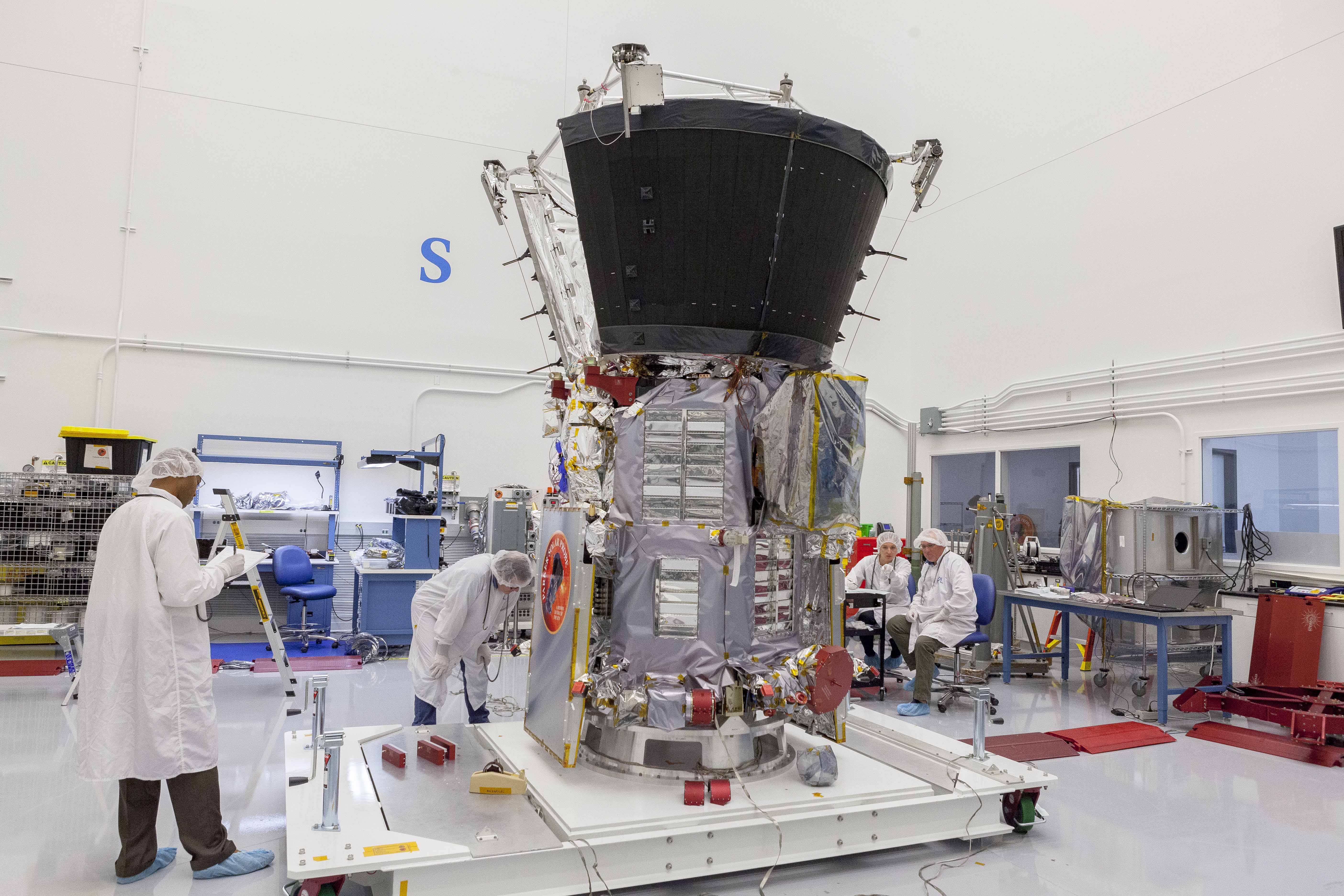Parker Solar Probe Successfully Completes Pre-Environmental Testing Review
Posted on 2017-10-13 10:50:13NASA’s Parker Solar Probe, the first mission to fly into the Sun’s corona, has successfully completed a review that approves the beginning of the spacecraft’s environmental testing.
A review panel of engineers from NASA and the Johns Hopkins Applied Physics Laboratory, where the spacecraft was designed and is being built, declared on September 29 that Parker Solar Probe has passed required performance tests and can move into environmental testing.
For Parker Solar Probe, this means the probe will be subjected to a series of challenging simulations of launch and space operations that will ensure the spacecraft is up to the difficult task of exploring the extreme environment of the Sun’s atmosphere – the corona. The spacecraft will first be bolted to a vibration table at APL, which will simulate the violent physical forces of launch; Parker Solar Probe will be lifted skyward on a Delta IV-Heavy launch vehicle, the largest in the world currently in operation. The spacecraft has already completed mass properties testing, which is important for mating to the launch vehicle and for maneuvering and attitude control.
In early November, the spacecraft will travel a short distance to the NASA Goddard Space Flight Center in Greenbelt, Maryland, where it will be subjected to acoustic, thermal cycling, and vacuum testing that will make sure the probe can withstand the sound generated at launch and the dramatic swings of hot and cold that it will be subjected to following launch from Cape Canaveral Air Force Station, Florida, in summer 2018.
“It’s a testament to the hard work and diligence of the Parker Solar Probe team that we successfully completed our review, and we’re excited to move forward into environmental testing,” said Andy Driesman of APL, the Parker Solar Probe project manager. “We’re looking forward to completing these tests, and then heading to Florida to begin the preparations for next year’s launch.”
NASA’s Parker Solar Probe spacecraft will explore the Sun’s outer atmosphere and make critical observations that will answer decades-old questions about the physics of stars. The resulting data will also improve forecasts of major eruptions on the sun and subsequent space weather events that impact life on Earth, as well as satellites and astronauts in space. The mission is named for Eugene N. Parker, whose profound insights into solar physics and processes have guided the discipline.

PERarticle
Credit: NASA/Johns Hopkins APL/Ed Whitman
High-Res Image